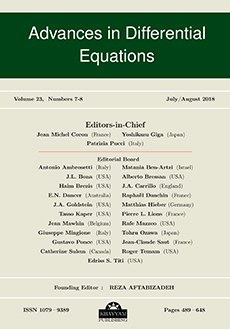Abstract
In this paper we consider two established structural acoustic models: Mathematically, the first model couples a hyperbolic (wave) equation, defined within a two- or three-dimensional acoustic chamber, with an elastic plate (or beam) equation, possibly with structural damping (parabolic type), defined on its elastic (flat) wall. Instead, the second model couples the same hyperbolic equation this time with a thermoelastic plate (or beam), either of parabolic type or else of {\em hyperbolic-dominated} type, defined on its flexible (flat) wall. The thermoelastic component may be supplemented by any canonical boundary conditions (B.C.), including the coupled free B.C. Moreover, its differential operators may have variable coefficients (in space). In either of the two models, coupling takes place on the elastic wall. This coupled PDE system (possibly with hyperbolic/parabolic interaction) generates a strongly continuous contraction semigroup $e^{At}$ on a natural energy space $Y$. The main result of the present paper is a backward uniqueness theorem for such structural acoustic semigroups: $e^{AT} y_0 = 0$ for some $T > 0$ and $y_0 \in Y$ implies $y_0 =0$.
Citation
R. Triggiani. "Backward uniqueness of semigroups arising in coupled partial differential equations systems of structural acoustics." Adv. Differential Equations 9 (1-2) 53 - 84, 2004. https://doi.org/10.57262/ade/1355867968
Information





